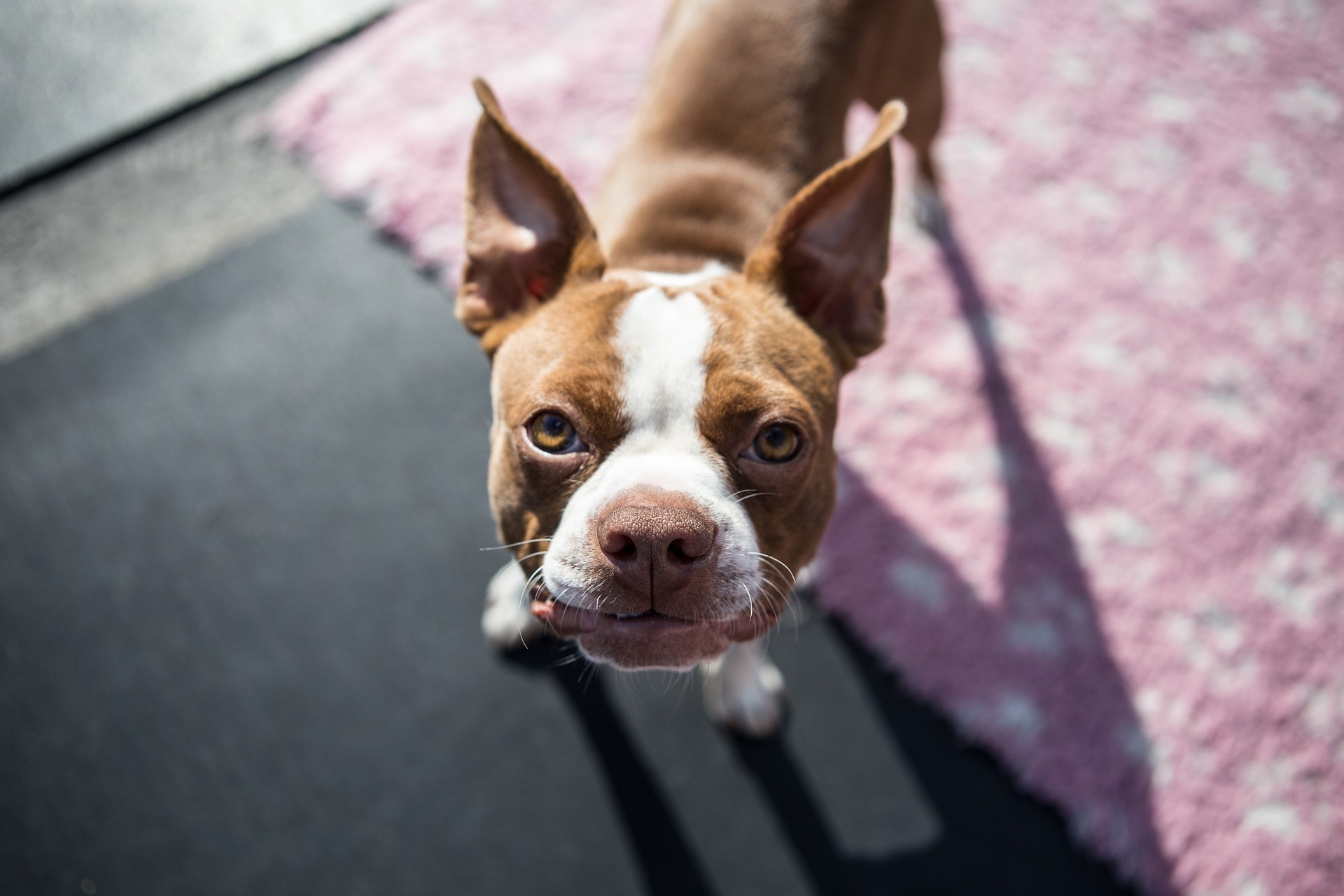French Bulldogs Versus Boston Terriers
Introduction
French Bulldogs Versus Boston Terriers – Two of the most popular dog breeds are the Boston Terrier and the French Bulldog. They are also two of the most misunderstood breeds.
People often assume that because they look similar, they must have similar temperaments, but that’s not actually true. Each breed has its own personality quirks and traits, so it’s important to understand their differences before adopting one as your new furry friend.
Read this guide to find out more about these lovable dogs so you can pick your favourite.
Size difference
Both Boston Terriers and French Bulldogs are small, similar-sized dogs.
French Bulldogs have a muscular build and larger bone structure, whereas Boston Terriers are lankier.
Their long legs give them a slight advantage over their Frenchie relatives. They stand 36-41cm tall and weigh 7-13kg, whereas French Bulldogs are 30-33cm tall and weigh 8-15kg.
Colouring
The primary distinction between Boston terriers and French bulldogs is likely their coat colours.
While both breeds are frequently black and white, terriers are typically bi-coloured with an even distribution of white and possibly chocolate, liver, or seal (a reddish hue).
In addition, he will typically have a white stripe between his eyes.
A bulldog may also be bi-coloured in these colours, but she will often have a solid coat, a black mask, or a large patch of a different colour on her chest.
Snouts
Both the Boston Terrier and the French Bulldog have short snouts and broad, square jaws. Bosties have broad, black noses with a distinct line between their nostrils. Similarly, the nose of a Frenchie is extremely short, with broader nostrils and a distinct line between them.
Because of their flatter faces, both dogs are brachycephalic breeds. Their small nostrils, long palates, and narrow tracheas can all lead to health and breathing issues.
Origin
The French Bulldog and Boston Terrier share the English Bulldog as a common ancestor. The French Bulldog, as they are affectionately known by their fans across the globe, actually originated in England.
The little toy Bulldogs that English lacemakers imported to work in Normandy during the Industrial Revolution were originally very well-liked matters. The dogs were then crossed with French Terriers in France to create the French Bulldog we know and love today. The breed gained popularity among Parisian women who admired its bat-like ears. Later, at the close of the nineteenth century, American fanciers established the first French Bulldog club.
In the United Kingdom, Boston Terriers and French Bulldogs are both classified as members of the Utility breed group, which also includes Dalmatians, Schnauzers, and Poodles. The Utility group is a mixed pack, and as the name implies, each breed was first bred for a different function.
So, Boston Terriers were recognized by the UK Kennel Club for the first time in 1914, while the French Bulldog was officially recognized in 1905.
Personality
Frenchies and Bosties may be small in size, but their personalities are far from diminutive. Both breeds of dogs are extremely sociable and affectionate, making them excellent companions.
The Boston Terrier lives up to its reputation as an American Gentleman. They can be lively, alert, and intelligent, alternating between bursts of energy and a desire to cuddle.
The Frenchie is also referred to as the Clown in the Clock of a Philosopher due to its mischievous personality and friendly disposition. They have a reputation for making their owners laugh, are extremely affectionate, and enjoy cuddling.
Exercise needs
Both dogs require moderate amounts of exercise.
Boston Terriers are typically more active than French Bulldogs and are capable of exhibiting high levels of energy. They enjoy running, jumping, and fetching and may even be slightly obsessed with a tennis ball. Their short snouts cause them to overheat and prevent them from being ideal running partners.
In fact, both breeds are prone to overheating due to breathing difficulties, so it is best to keep an eye on them on hot days or when they’ve been running a lot.
French Bulldogs are slightly more relaxed and agile when sprinting and jumping because of their bulkier build, but they aren’t any less joyful or eager. Regular, moderate exercise, such as long walks or hikes, is beneficial for Frenchies and will keep them in good health and trim.
Trainability and Intelligence
Boston Terriers and French Bulldogs are simple to train and make excellent first-time dogs.
The American Gentleman lives up to his moniker by being quick to pick up new skills, being a good listener, and being obedient. French Bulldogs can be a bit aggressive and obstinate, so it is essential for owners to assert their authority early on, using positive reinforcement techniques such as praise and treats.
Although Frenchies are small, you should not coddle your pet. They can become obstinate and aggressive toward other dogs if poorly trained. Similarly, Boston Terriers can be somewhat possessive, making early socialization with other dogs essential. If you have a puppy, enrol it in training classes and continue to socialize it as it grows with other dogs and people.
Lifespan
French Bulldogs have an average lifespan of over 10 years, whereas Boston Terriers live 12 to 14 years. Due to their short muzzles, they are both susceptible to respiratory issues and at risk for heat stroke in hot weather.
Health concerns
Obesity can develop in French Bulldogs if they are overfed and under-exercised. They may also experience issues with their eyes, heart, and back.
Boston Terriers are susceptible to cataracts and seizures, as well as allergies and deafness.
Price of puppies
The price of your new pet will be determined by the breeder you choose. Because French Bulldogs have grown in popularity over the years, they are more expensive than Boston Terriers.
French Bulldogs can cost up to £2000, and Boston Terriers can cost up to £700.
Conclusion
In the end, there is no right answer to this question. It all comes down to your personal preferences and what you want in a dog. Both breeds are great choices, but you should know that there are some differences between them before making your final decision.
You might think that these two breeds would be similar since they’re both terrier dogs, but in reality, they have many differences between them.
This article talks about their similarities and differences as pets so you can decide which one is right for you.

